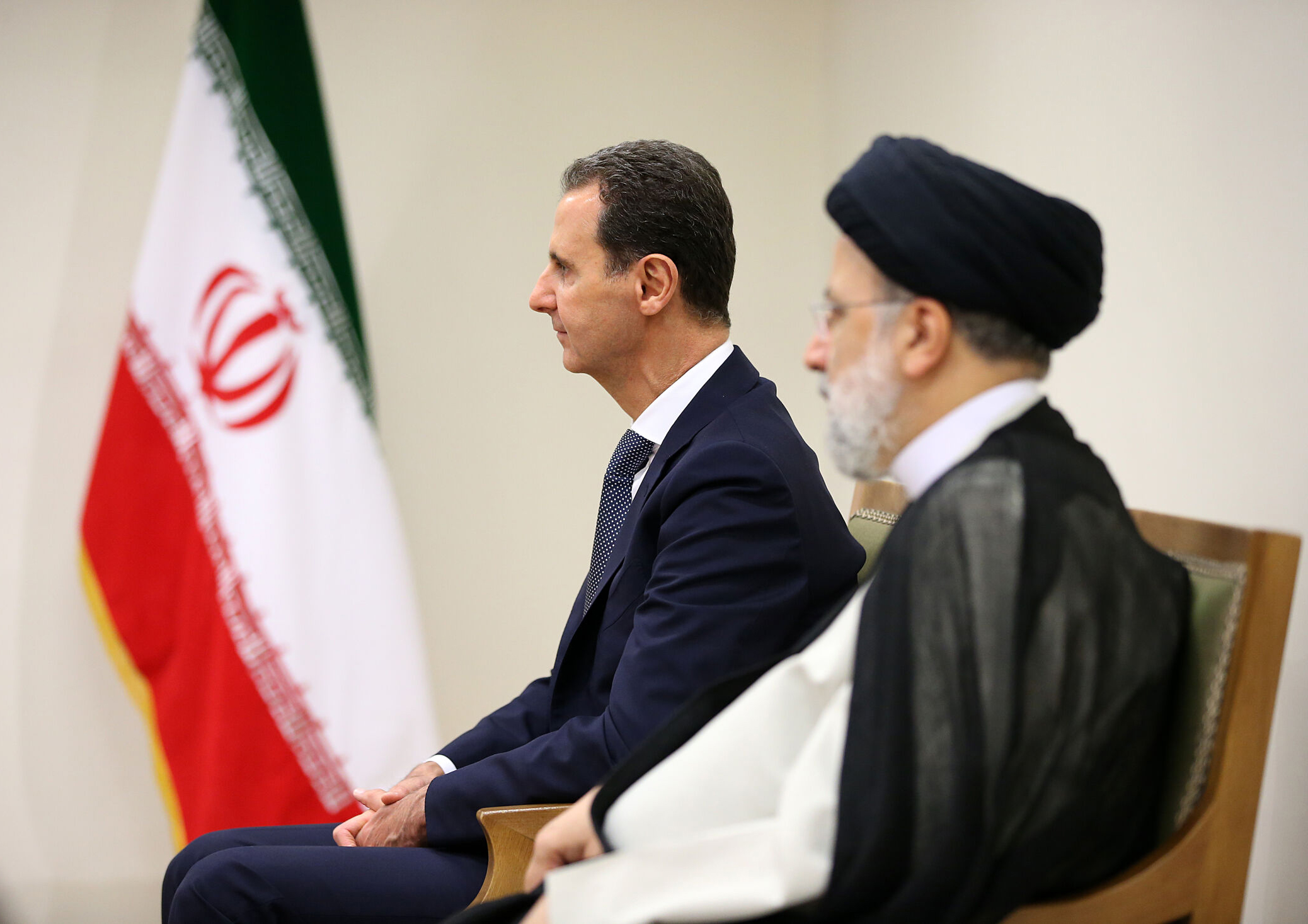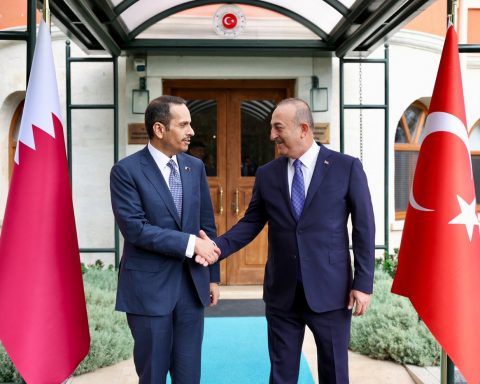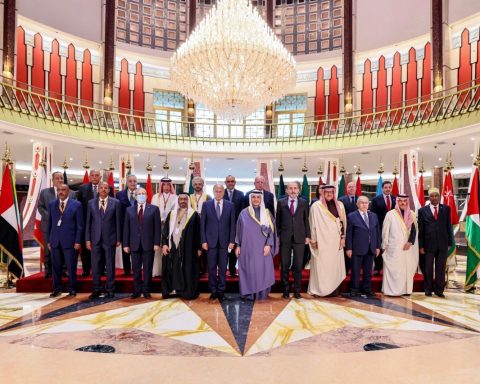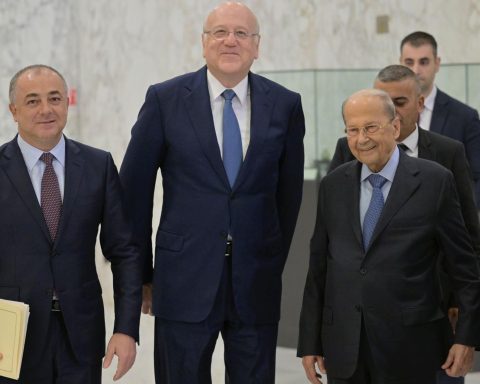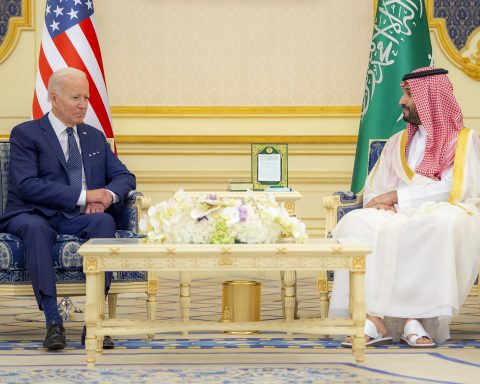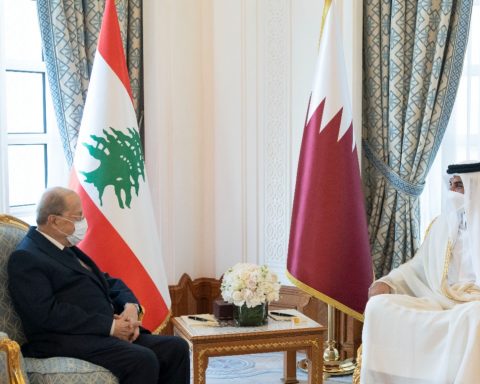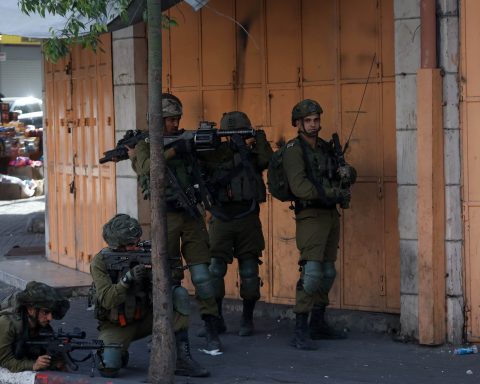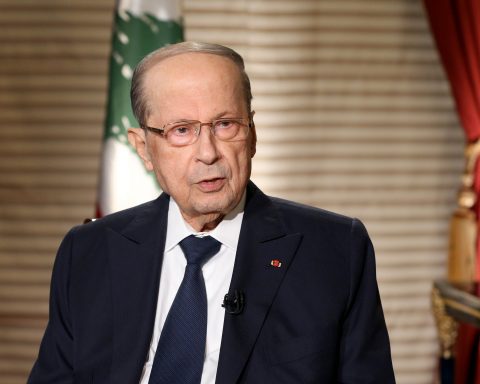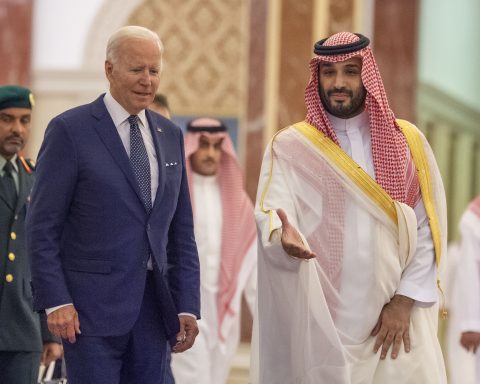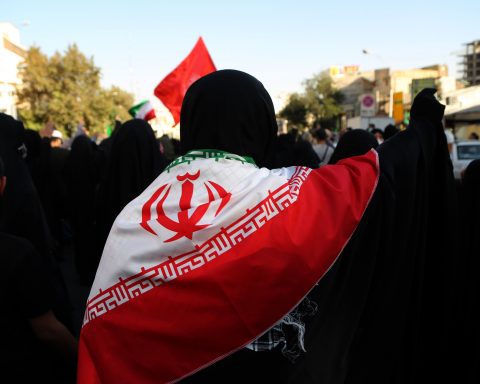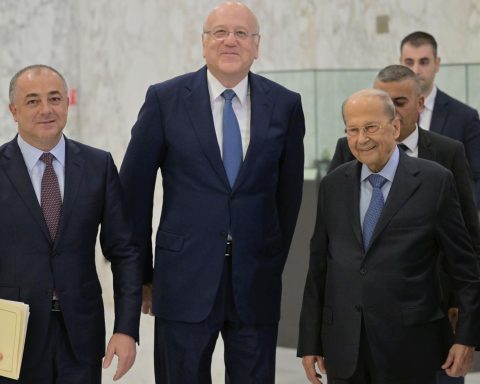In the first months of the civil war in Syria, while the regime forces were withdrawing rapidly against the opposition, Iran, which has called Lebanese Hezbollah to Syria to support the regime since 2012, including groups such as the Fatemiyoun and Zainebiyoun brigades into the war, and approximately 150,000 to 200,000 Shiites. This changed the course of the war in favor of regime forces, along with other factors. In addition, with the support of the Patriotic Union of Kurdistan (PUK), with which it has good relations in northern Iraq, Iran made a deal between the PKK’s Syrian branch, the Democratic Unity Party (PYD), and the Assad regime in return for not joining the Syrian opposition and suppressing the anti-regime Kurdish groups in the region. Thus, the Assad regime withdrew its armed forces from some Kurdish-dominated settlements in the north of the country and handed them over to the PYD, both as part of its strategy to fight against the opposition and to prevent Türkiye from increasing its influence in the region. Therefore, instead of mobilizing the Kurdish opposition in Syria against the Assad regime, which it calls “our executioner,” the PYD/PKK used it for its war against Türkiye, and for the PKK, the region entered into a statehood process with “autonomous” cantons.
Iran’s relationship with the Revolutionary Guards and the PYD, which it conducts largely through intelligence channels, first became visible when PYD leader Salih Muslim visited Tehran on August 7-8, 2013, at the invitation of the Iranian Ministry of Foreign Affairs and met with high-level officials. At this meeting, Iran promised to “be in solidarity” with the PYD, as Muslims put it. The Tehran administration, which supported the PYD in Ras al-Ayn in its fight against Al-Nusra, which it describes as “Salafi/Takfiri terrorists,” as well as the tactical reasons mentioned above, reinforced its relations with the PYD with the rise of Daesh/ISIS in the region. However, the PYD has also started to develop relations with the United States under the pretext of fighting against Daesh/ISIS. In this process, the armed wing of the PYD, the Kurdish People’s Protection Units (YPG), was able to consolidate and expand its control area in the field thanks to the great support of the US. Parties such as the Syrian Kurdish National Council (ENKS), which was formed in the region by parties close to its rival Barzani, were either closed or put under pressure. The PYD did not recognize alternative Kurdish formations’ right to live. In the words of ENKS Member Nuri Brimo, the organization, which took over northern Syria from the Assad regime without firing a single bullet, almost turned the regions it held into a dungeon. During this time, it attacked ENKS members, closed offices, and made political life unbearable. Brimo says that the organization handed over ENKS detainees in the dark dungeons established in northern Syria to the Assad regime in Aleppo.
Paradoxes in Iran/PYG relations
On January 7, 2014, the PYD declared that it had established “cantonal administrations” under the name of “democratic autonomy” in the regions of Cizre, Kobani and Afrin, which it took over from the Assad regime. PYD leader Salih Muslim said that this was not a temporary administration announcement but was the first step of its implementation. He then announced that he had established the fourth canton in Tell Abyad, which they had taken from Daesh/ISIS. While the PYD, which strengthened its position in the field, accelerated its initiatives for autonomy, the fear that this would lead to the disintegration of Syria made Iran uneasy. Furthermore, Iran does not want the Syrian Kurds to be a role model for its restless Kurdish population. The Israeli and American support for Kurdish autonomy further increased Iran’s anxiety. Iran’s policy has evolved to contain and weaken both the Syrian Kurds and the Ankara-backed opposition at the same time. This policy aims to completely neutralize the opposition and keep the PYD under control.
As a result, the relationship between Iran and the PYD initially emerged as a tactical cooperation developed against the opposition in Syria and Türkiye, but later evolved into a relationship that also includes paradoxes and conflicts. From time to time, Iran even carried out some attacks with the Shiite militias in the field to limit PYD elements. This relationship is also the product of a regional rivalry. As Sinkaya stated, the fierce competition between the PYD and ENKS in Rojava is a reflection of the regional conflict between the PKK and Barzani, and it intensifies the conflict at the regional level. With this rivalry between Syrian Kurds moving to the regional level, regional powers have to determine their position. In this context, while Iran stood closer to the PKK/PYD line with the KYB and Goran, which are the supporting parties in the Iraqi Kurdish Regional Government, Türkiye met the same line with the KDP and ENKS. Thus, a separate “proxy war” has emerged in northern Syria, related to the Syrian civil war but outside of it.
Iran’s search for rapprochement with Türkiye
The Tehran administration, which has been fighting with all its might to keep the Assad regime afloat and making this a problem of its “resistance axis,” constantly emphasizes the withdrawal of foreign powers from Syria, the protection of its territorial integrity, and the fight against terrorism. In this context, Iran was constantly disturbed by the PYD’s desire for autonomy. For this reason, with the announcement that the PYD declared a federation in the regions it controls in northern Syria in 2016, the Tehran administration got closer with Türkiye in order to prevent the PYD/PKK’s federalism goal and to increase cooperation based on common interest in this direction, with the effect of other factors. Iranian Foreign Minister Javad Zarif, who met with his Turkish counterpart Mevlut Cavusoglu in Istanbul, said that the goals and perspectives of the two countries are common in the fight against terrorism and extremism and that cooperation should be increased in this area as well, stating, “We see Türkiye’s security as our own security.” Cavusoglu harshly criticized the PYD’s declaration of a federal zone and said, “They want to divide Syria. We are against it. Therefore, we are against such initiatives and will continue to be against them. We can think differently with Iran about Assad. We do not hide our differences in this regard. But we think the same as Iran about peace in Syria. We support the territorial integrity of Iran and Syria.” Operation Euphrates Shield, which started right after Zarif and Cavusoglu’s mutual visit in August 2016, was evaluated as a reflection of the cooperation between Ankara and Tehran against the PYD’s declaration of a federation.
However, Iran and Türkiye’s search for cooperation against the common threat of the PYD’s declaration of federation did not last long, and Iran began to strongly criticize the Turkish Air Force’s operations in Syria. In addition, Iran maintained its ties with the PYD/PKK and sought opportunities to expand its cooperation. For example, Basnews, one of Barzani’s media outlets, reported in November 2016, based on a military source in Sulaymaniyah, that Qasem Soleimani demanded Cemil Bayik’s forces in Shengal Mountain to participate in the Mosul operation. In the news, it was claimed that Qasem Soleimani promised to provide them with weapons and money if the PKK participated in the Mosul operation. According to the source in question, Cemil Bayik stated that the PKK will take part in the block that Iran is in within the framework of developments in the region. In the news, it was claimed that after the meeting between Soleimani and Bayik, the Iraqi government and some political circles helped the PKK to establish a military base in Baghdad and some regions. Likewise, according to the news from Duhok-based Waar TV, which is based on high-level officials of the Syrian regime, it was claimed that Iranian Revolutionary Guards officers met with PKK senior executives to discuss security and cooperation issues in the PYD-controlled town of Rmelan. Elsewhere, Rojava Independent Kurdish Union Member Azad Osman said that on March 15, senior officials of the Syrian regime, some Iranian Revolutionary Guards officers and PKK administrators in the region came together in Rmelan to discuss military developments and security issues among themselves and in the region. It was emphasized that the Raqqa operation and the surrender of Manbij to the Syrian regime were among the topics discussed at the meeting, Osman added that this meeting was a complement to the previous meetings. He also said that the PKK’s presence in Shengal and the efforts to counter it were discussed by the parties at the meeting.
Iran’s possible covert accounts
In October 2019, Iranian Foreign Minister Javad Zarif cited the 1998 security agreement, known as the “Adana Accords”, signed between Turkey and Syria as a legal framework for peacefully maintaining security on the Türkiye-Syria border. According to the agreement, then-Syrian President Hafez al-Assad promised to close the bases of the PKK terrorist organization in Syria and to expel Abdullah Ocalan from the country. Today, Iran refers to this agreement between Türkiye and Syria on various occasions. In addition, although the Tehran administration constantly voices that Ankara is openly violating Syria’s sovereignty, paradoxically, it wants Türkiye to fight the PYD/PKK in northern Syria for several reasons. According to this, the first is the difficulty for the Assad regime of removing the PYD, which is supported by the US and Israel, from the region. Secondly, Türkiye, which constantly emphasizes the territorial integrity of Syria compared to the PYD, will eventually leave the region, even if Iran has some hesitations. In addition, the SDF, of which the YPG is a fundamental part, has established close relations with Israel in recent years. A series of Israeli drone and missile attacks against Iran-backed Shiite militias in Iraq are alleged to have been launched from Kurdish-held areas in northeastern Syria. If Türkiye ultimately drives the PYD/PKK out of Syria, it will be able to ensure that northeastern Syria will not become a launching pad for Israel to launch attacks against Iran’s presence and interests in the region. However, now the PYD is a tactical tool for Iran to use against Turkey.

